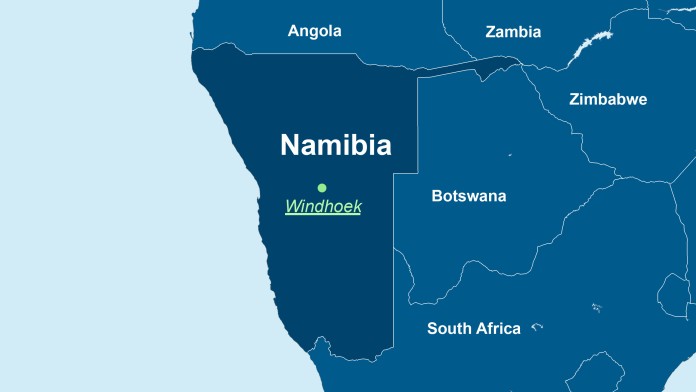
Namibia is two and a half times the size of Germany, but only around 2.6 million people live there. It is one of the most sparsely populated countries in the world – the economic domestic market is therefore very small. The country primarily exports unprocessed raw materials such as diamonds, minerals and uranium. Oil fields were recently discovered off the coast, which could possibly be developed into another export commodity. The World Bank classifies Namibia as a upper middle income country. At the same time, Namibia is stable and democratic, an important prerequisite for sustainable development.
The country is divided, with a small wealthy upper class and the large majority of the population living in poverty. It would be difficult to find anywhere where the gap between the rich and the poor is as great as it is here. Some of the people can maintain a high standard of living, while more than 40% of the population were considered poor even before the coronavirus crisis, not only in terms of low income, but also in the areas of education, health and living standards. Informal settlements on the outskirts of Windhoek, for example, are not connected to the power or water supply and sewage system.
The country has rich biodiversity and numerous nature reserves, but they are struggling with the challenges of climate change, poaching and underfunding.
On behalf of the German Federal Government, KfW Development Bank Namibia is involved in the following areas
On behalf of the Federal Ministry for Economic Cooperation and Development (BMZ), KfW has been supporting Namibia by providing funding for the private sector for a long time. Credit lines are issued to local banks to provide people in rural areas in particular with access to financial services, such as microloans.
KfW also promotes vocational training, particularly in sectors with high employment potential, such as the maintenance of industrial plants, processing of agricultural products or tourism, transport and logistics.
A reliable and adequate energy supply is an important basis for Namibia’s sustainable and inclusive development. KfW is funding the construction of a wind farm with an output of 40 MW in the south of the country. This will give almost 88,000 people first-time or improved access to electricity.
In consultation with a Namibian NGO, KfW is helping to connect informal settlements in the north of the country to the power and water supply as well as the sewage system.
In Namibia, natural resources and biodiversity offer significant potential for the country’s socio-economic development. Germany is supporting the Namibian Ministry of Environment, Forestry and Tourism in turning the national parks into popular holiday destinations. The aim is to expand the infrastructure in the parks, improve park management and ensure fair joint venture agreements between local communities and tourism companies.
Due to their common sensitive history, Namibia holds a special position in the German development cooperation. Germany is accompanying the country on their journey to progress that benefits all residents of the nation.
KfW Office Windhoek
Director KfW Office: Beatrice Lucke
Schwerinsburg St. 7
P.O. Box 21223
Windhoek
Namibia
+264 61 411400
Fax: +264 61 22 39 56